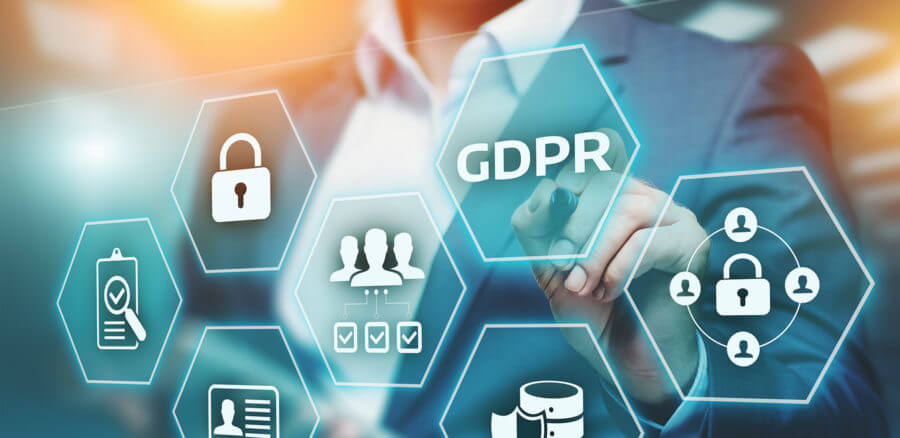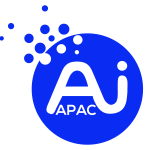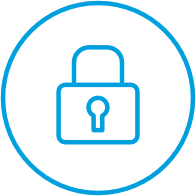85% of chief information security officers view security issues related to digital transformation as having a somewhat to extremely large effect on their companies.
As enterprises move ahead with their strategic efforts at digital transformation, they also find that their approach to security must also transform. The new technologies of today’s dynamic digital world, such as cloud computing, IOT, and the interconnected supply chain, bring a raft of new challenges. Securing huge amounts of proprietary information and other critical business assets becomes exponentially more difficult, and meeting regulatory requirements more complex. Our three broad categories of security services help organisations drive productivity, business growth, and cost-optimization while establishing effective controls around sensitive assets.

Change is constant in cybersecurity — continual, rapid, dynamic change. It’s impossible to maintain an effective defensive posture without constantly evolution. Security measures that worked in the past will not be effective today, and today’s security controls will not be effective tomorrow.
Many factors contribute to this rapid pace of change. Attacks are on the rise, and they are getting more advanced, persistent and stealthy each day, with some attackers even leveraging artificial intelligence (Ai) to power their campaigns. Trends such as hybrid multicloud deployments, the internet of things (IoT), and mobile devices and services are making the attack surface larger and more complex. Traditional defenses are quickly outdated and the cybersecurity playing field has become a game of cat-and-mouse.
As cyberattacks grow in volume and complexity, artificial intelligence (Ai) is helping under-resourced security operations analysts stay ahead of threats. Curating threat intelligence from millions of research papers, sensors, security devices, best practice guides that have been integrated, Ai provides instant insights to help you fight through the noise of thousands of daily alerts, drastically reducing response times.Through machine learning and deep learning techniques, the Ai improves its knowledge to “understand” cybersecurity threats and cyber risk.
Moreover, Ai gathers insights and uses reasoning to identify the relationships between threats, such as malicious files, suspicious IP addresses or insiders. This analysis takes seconds or minutes, allowing security analysts to respond to threats up to 60 times faster.
Ai eliminates time-consuming research tasks and provides curated analysis of risks, reducing the amount of time security analysts take to make the critical decisions and launch an orchestrated response to remediate the threat.

Automated GRC Integration Tools
Automating GRC services can help in effective monitoring of risk and compliance processes, intelligent use of technology and data while improving time to value. These services can foster tangible value across IT operations through efficient use of resources, enhancing agility, and strengthening governance.
BENEFITS
- Reduce manual redundant test control costs by up to 75%
- Time to Risk Assessments reduced by as much as 50%
- Centralised automation of risk and compliance processes to improve business performance.
- Reduce costs, optimize technology investments, and align IT operations to business goals.
- Secure organisational data, manage risks effectively by establishing security controls, meet compliance goals, and data security needs.
IAM Automation
Identity is the foundation of security, so a robust automated identity and access management (IAM) system is by far the best way to keep your company’s information safe. Automating IAM improves services, increases productivity, minimizes manual errors, creates efficient systems and with heightened security.
BENEFITS
- Time to remediate access clean up in seconds not days/weeks.
- Increased internal user satisfaction scores of access management by up to 40% improvement
- Seamless User interaction and monitoring
- Real-time monitoring
- Real time provisioning/deprovisioning for high risk access
- Reduced costs for provisioning thru API and RPA


Agile Risk Management (IRM) Automation
Agile security management is the continuous, pervasive and proactive method of protecting asset. There is an emphasis on involving everyone in the organisation to help identity and report security and risk challenges, and to reduce dwell times through rapid response and automated analysis.
BENEFITS
- Time to integrated solution reduced by upward of 18 months.
- Aligned issues to automated controls with up to 75% reduced support cost
- Quicker issue identification by reinventing “first line of defense” (FLOD)
- Realtime help for raising concerns
- Issue de-duplication and categorization with Ai
- Issue Prevention through just-in-time policy checks
Cybersecurity Automation
Security automation is the machine-based execution of security actions with the power to programmatically detect, investigate and remediate cyberthreats with or without human intervention by identifying incoming threats, triaging and prioritising alerts as they emerge, then responding to them in a timely fashion.
BENEFITS
- Reduced training costs and support by up to 60%
- Time to issue ID in seconds not weeks.
- Reduced Training and staff turnover
- Ai to provide the Realtime issue not the issue review
- Context driven alerts
- Reduce compliance resources
- Fewer resiliency tests

A well planned and executed metadata strategy allows companies to gather a significant portion of the required information quickly and validate how well policies are met.

Compliance in the Age of Big Data and Ai
SmarTek21’s compliance services not only identify data locations and types in the purview of GDPR, but also validates accuracy and generates a confidence/reliability score based on which stakeholders can take appropriate action.
This function enables data controllers to establish a repeatable action that can quickly scan large amounts of personal data throughout the data lifecycle. This is important, because GDPR compliance is an ongoing commitment, not a “once-in-a-year” task.
The solution is designed around three key processes in the data supply chain—capture, curate and consume—and it does all the heavy lifting, from identifying how the data enters the enterprise system from structured and unstructured sources to which enterprise systems and processes use it, and for what purpose.
GDPR compliance is ultimately about protecting personal data and individual rights and freedoms. Organizations that see compliance as an opportunity to align their priorities to the principles of data ethics embedded in GDPR are poised to build a more secure and trustworthy foundation for sustained growth.
SmarTek21 Cybersecurity Services
SmarTek21’s security services helps organisations prepare, protect, detect, respond and recover along all points of the security lifecycle.
Cybersecurity challenges are different for every business in every industry. Leveraging our global resources and advanced technologies, we create integrated, turnkey solutions tailored to your needs across your entire value chain.
Whether we’re defending against known cyberattacks, detecting and responding to the unknown, or running an entire security operations center, we will help you build cyber resilience to grow with confidence.

Collaboration lies at the heart of our approach to unlocking the business value of the cloud while addressing complex cloud security concerns. We work closely with our clients to identify a holistic set of security process and technology solutions that underpin cloud strategy, satisfy industry and regulatory requirements and achieve business goals. Among the benefits our collaborative approach to security providers are:
- Fostering confidence and protecting opportunities: The objective of security is to foster confidence in the Internet and to ensure the continued success of the Internet as a driver for economic and social innovation.
- Collective Responsibility: Internet participants share a responsibility towards the system as a whole.
- Evolution and Consensus: Effective security relies on agile evolutionary steps based on the expertise of a broad set of stakeholders.
Gated security measures inhibit agility and are often incompatible with DevOps workflows. I&O leaders must work with application leaders to integrate security into their DevOps initiatives by driving cultural change, transforming security practices and leveraging automation tools.
Secure Development Services & Consulting
A fundamental shift underway is the movement from “bolted on” security to “baked in” security, from adding security after production to building in security from the earliest point of development.
A fundamental shift underway is the movement from “bolted on” security to “baked in” security.
That typically involves transitioning from waterfall development practices (finish all development before launching into production), to DevOps (iterative development taking into account what is involved in operating the software, with constant improvements pushed into production as necessary), enabling much more rapid application development, especially for the cloud. Now we’re seeing movement to DevSecOps, which ensures that security is considered from project inception.
It is a progression already witnessed in other industries. For instance, drivers once used aftermarket locking bars to connect their steering wheel to their brake pedal, preventing the use of either. Today, baked-in security measures in cars abound, with modern vehicles boasting an array of digital-enabled capabilities including GPS trackers, ignition token proximity sensors, and even tilt sensors to prevent unauthorized attempts to tow vehicles away.
What is SecDevOps?
SecDevOps (also known as DevSecOps and DevOpsSec) is the process of integrating secure development best practices and methodologies into development and deployment processes which DevOps makes possible.
SecDevOps is a set of best practices designed to help organisations implant secure coding deep in the heart of their DevOps development and deployment processes. …It seeks to embed security inside the development process as deeply as DevOps has done with operations.
We need to ensure that we don’t consider security as an afterthought and that, across an entire organisation, the benefits of implementing a security mindset — as well as the consequences of not doing so — are well understood.

SecDevOps consists of two distinct parts:
Security as Code (SaC): which refers to the building of security into the tools that exist in the DevOps pipeline. This means automation over manual processes. It means the use of static analysis tools that check the portions of code that have changed, versus scanning the entire code base.
Infrastructure as Code (IaC): defines the set of DevOps tools used to setup and update infrastructure components. Examples include Ansible, Chef, and Puppet. …With IaC, if a system has a problem, it is disintegrated, and a new one (or two) are created to fill the spot.
The key to successful DevOps security lies in changing the underlying DevOps culture to embrace security—with no exceptions. As with any other methodology, security must be built into DevOps, To implement SecDevOps we need to revisit our existing DevOps pipelines, processes, and culture and ensure that security is integrated just as deeply and tightly as any other development consideration.





